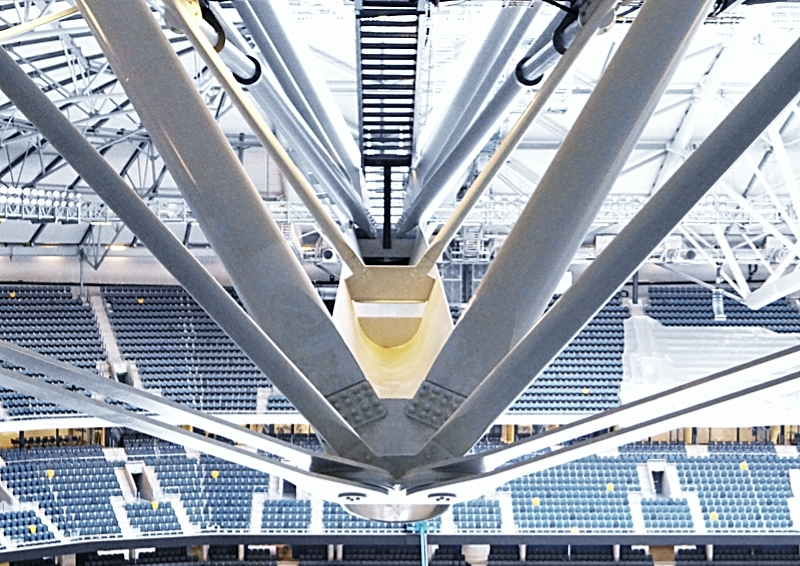Types of structure

|
[edit] What is a structure?
Within the context of the built environment, the term ‘structure’ refers to anything that is constructed or built from interrelated parts with a fixed location on the ground. This includes buildings, but can refer to any body that is designed to bear loads, even if it is not intended to be occupied by people (engineers sometimes refer to these as 'non-building' structures – such as bridges, tunnels, and so on).
[edit] What are the main classification types for structures?
Structures can be classified in a number of ways:
- Type.
- Structural system.
- Application.
- Form.
- Material.
- Element.
- Overall shape.
[edit] How are structures defined by type?
Types of structural systems include:
[edit] How are structures defined by system?
Types of structural system include:
[edit] How are structures defined by application?
Applications of structures include:
- Building.
- Aqueducts and viaducts.
- Bridges.
- Canals.
- Cooling towers and chimneys.
- Dams.
- Railways.
- Roads.
- Retaining walls.
- Tunnels.
- Coastal defences.
[edit] How are structures defined by form?
- One-dimensional: Ropes, cables, struts, columns, beams, arches.
- Two-dimensional: Membranes, plates, slabs, shells, vaults, domes, synclastic, anticlastic.
- Three-dimensional: Solid masses.
- Composite. A combination of the above.
[edit] How are structures defined by material?
Structural materials include:
- Timber and similar materials such as bamboo, plywood, and engineered timber.
- Concrete.
- Metal: Steel, aluminium and so on.
- Masonry: Brick, block, stone and so on.
- Glass.
- Adobe, earth, clay, cob and so on.
- Fabric, such as fabric membranes.
- Composite, such as structural insulated panels.
[edit] How are structures defined by element?
Structural elements include:
- Substructure.
- Superstructure.
- Foundation.
- Roof.
- Shell and core.
- Structural frame.
- Floor.
- Wall: loadbearing walls, compartment walls, external walls, retaining walls.
See Elements of structure in buildings for more information.
[edit] How are structures defined by overall shape.
Overall shapes of structures include:
- Low-rise.
- Multi-storey.
- Mid-rise.
- High rise.
- Groundscraper.
- Skyscraper.
- Supertall.
- Megatall.
- Super-slender
- Megastructure.
- Anticlastic.
- Synclastic.
- Hyperbolic paraboloid.
- Conoid.
- Tower.
- Dome.
[edit] Related articles on Designing Buildings
- Civil engineer.
- Deflection.
- Elements of structure in buildings
- Engineer.
- Platform construction.
- Span.
- Structure.
- Structural engineer.
- Structural principles.
- Substructure.
- Superstructure.
- The development of structural membranes.
- Types of beam.
- Types of building.
- Types of column.
- Types of construction.
- Types of wall.
- Types of structural load.
Featured articles and news
Moisture, fire safety and emerging trends in living walls
How wet is your wall?
Current policy explained and newly published consultation by the UK and Welsh Governments.
British architecture 1919–39. Book review.
Conservation of listed prefabs in Moseley.
Energy industry calls for urgent reform.
Heritage staff wellbeing at work survey.
A five minute introduction.
50th Golden anniversary ECA Edmundson apprentice award
Showcasing the very best electrotechnical and engineering services for half a century.
Welsh government consults on HRBs and reg changes
Seeking feedback on a new regulatory regime and a broad range of issues.
CIOB Client Guide (2nd edition) March 2025
Free download covering statutory dutyholder roles under the Building Safety Act and much more.
AI and automation in 3D modelling and spatial design
Can almost half of design development tasks be automated?
Minister quizzed, as responsibility transfers to MHCLG and BSR publishes new building control guidance.
UK environmental regulations reform 2025
Amid wider new approaches to ensure regulators and regulation support growth.
The maintenance challenge of tenements.
BSRIA Statutory Compliance Inspection Checklist
BG80/2025 now significantly updated to include requirements related to important changes in legislation.
Shortlist for the 2025 Roofscape Design Awards
Talent and innovation showcase announcement from the trussed rafter industry.























Comments
[edit] To make a comment about this article, click 'Add a comment' above. Separate your comments from any existing comments by inserting a horizontal line.